A Look At Future Concept Cars From The Past That Look Bizarre Now
Automakers have often pushed the boundaries of creativity, resulting in concept cars that defied conventions and challenged the status quo. When these cars were first revealed, they dazzled everyone with their futuristic design and cutting-edge features… but now, they seem a bit strange and out of place compared to today’s standards.
However, despite all their eccentricities, these concepts have made a place in automotive history due to their quest for innovation. Let us have a look at some of the most futuristic concept cars from the past that look bizarre now.
Ford Gyron (1961)
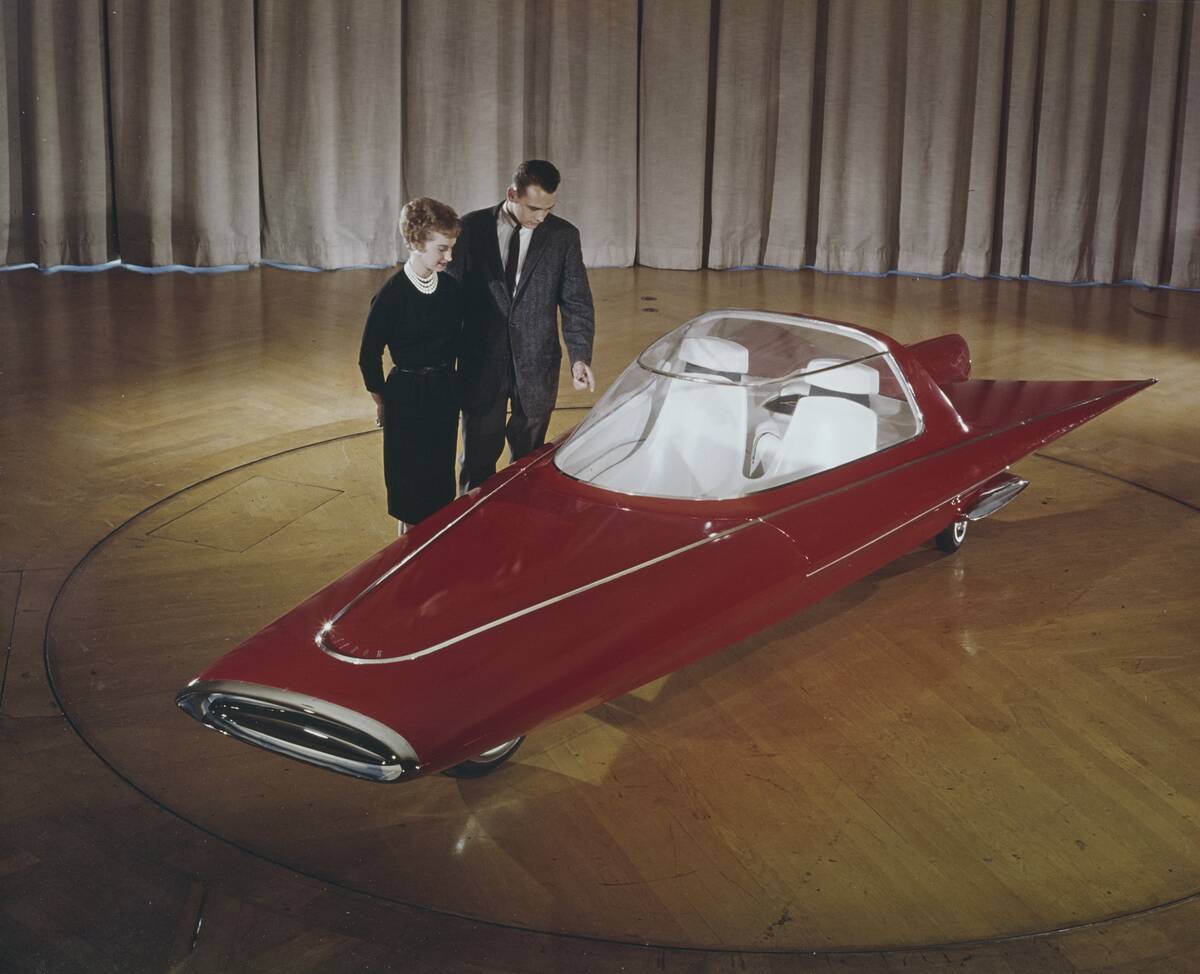
Unveiled at the 1961 Detroit Motor Show, the Ford Gyron was a futuristic concept car with a distinctive design. Unlike traditional cars, it had two wheels like a motorcycle and it used gyroscopes for stability.
In addition to its striking design, the Gyron had a number of advanced features as well. The car captured attention when it was launched, but it was primarily created for research and marketing, with no plans for production.
AMC Astra-Gnome (1956)
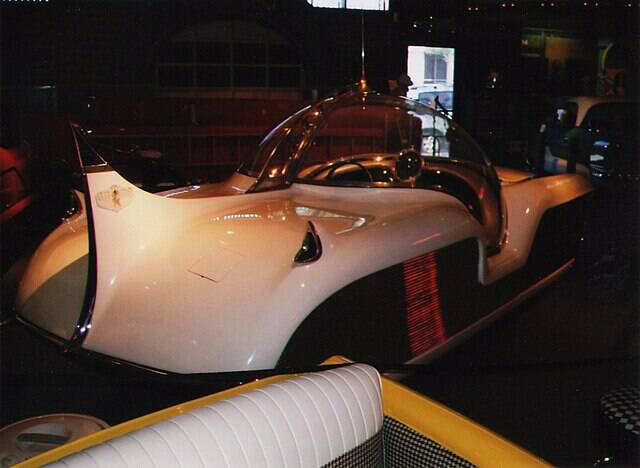
The 1956 Astra-Gnome, aka the “Time and Space Car,” was created by Richard Arbib for AMC. Inspired from the space-age, it had a bubble-top canopy that could be raised to allow entry into the vehicle. It also featured a unique dashboard design with a circular control panel, housing various instruments and controls.
Mechanically, the Astra-Gnome was based on the chassis of the AMC Rambler, and was powered by a V8 engine via an automatic transmission. Measuring 6-feet in width, the concept car was notably much greater than contemporary passenger vehicles.
Cadillac Cyclone (1959)

Cadillac’s Cyclone concept car featured innovative elements mirroring spacecraft technology. It had a bubble top canopy and sliding motion doors activated by a button. The car’s canopy could be neatly stowed in the rear compartment, resting securely on a specialized air-bag base.
Inspired by space travel and rocket design of the late 50s, the Cyclone’s large black nose cones served as electronic alerts that could signal nearby vehicles. Despite its groundbreaking features, the Cyclone was never produced commercially.
General Motors Firebird I (1954)

The XP-21 Firebird 1 was the first gas turbine vehicle ever to be built. It was envisioned to determine whether the gas turbine could be used as an efficient and economical power plant for the future vehicles.
With sleek space age aesthetics of the 1950s, the Firebird 1 looked more like a jet aircraft than an automobile. The design featured a bubble-topped canopy over a single-seat cockpit, a bullet-shaped fuselage crafted entirely of fiberglass, short wings, and a vertical tail fin.
Ford Nucleon (1958)
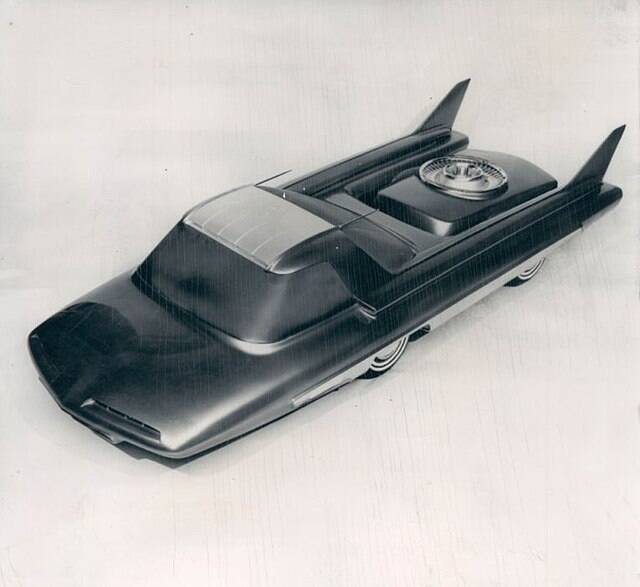
Back in the late 50s, it was believed that nuclear technology could be made small and cheap enough to replace gasoline. So, Ford came up with the bold idea to use it to power cars.
Unveiled in 1957, the Ford Nucleon featured a small nuclear reactor in the rear of the vehicle. The idea was to use uranium fission to power a steam engine, such as done in nuclear submarines. But it proved to be impractical, and the car could never advance beyond the concept stage.
General Motors Firebird II (1956)
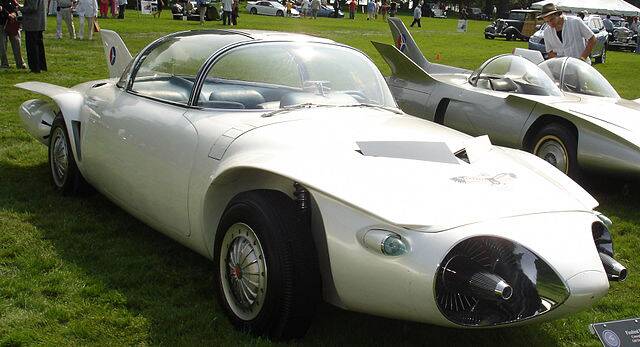
The Firebird II, introduced at the 1956 GM Motorama, was a gas-turbine-powered concept car. Built as a family car with four seats, it had a sleek, low profile and wide body, featuring two big air intakes in the front, a tall bubble canopy roof, and a vertical tail fin.
The Firebird II featured a titanium body and many advanced technologies including power disc brakes, individual air conditioning control, magnetic ignition key, electric gear selection, and all-wheel independent suspension.
Citroen Karin (1980)

Unveiled at the 1980 Paris Auto show, the Citroen Karin was one of the brand’s most unconventional creations. This peculiar vehicle featured a three-seat layout, placing the driver’s seat in the middle flanked by two passenger seats. Moreover, its angular body shape and incredibly small roof gave it a distinctly pyramid-like appearance.
While the Karin’s design was undeniably quirky and it boasted a number of unique features, it could never evolve from the concept stage due to its impracticality.
General Motors Firebird III (1959)
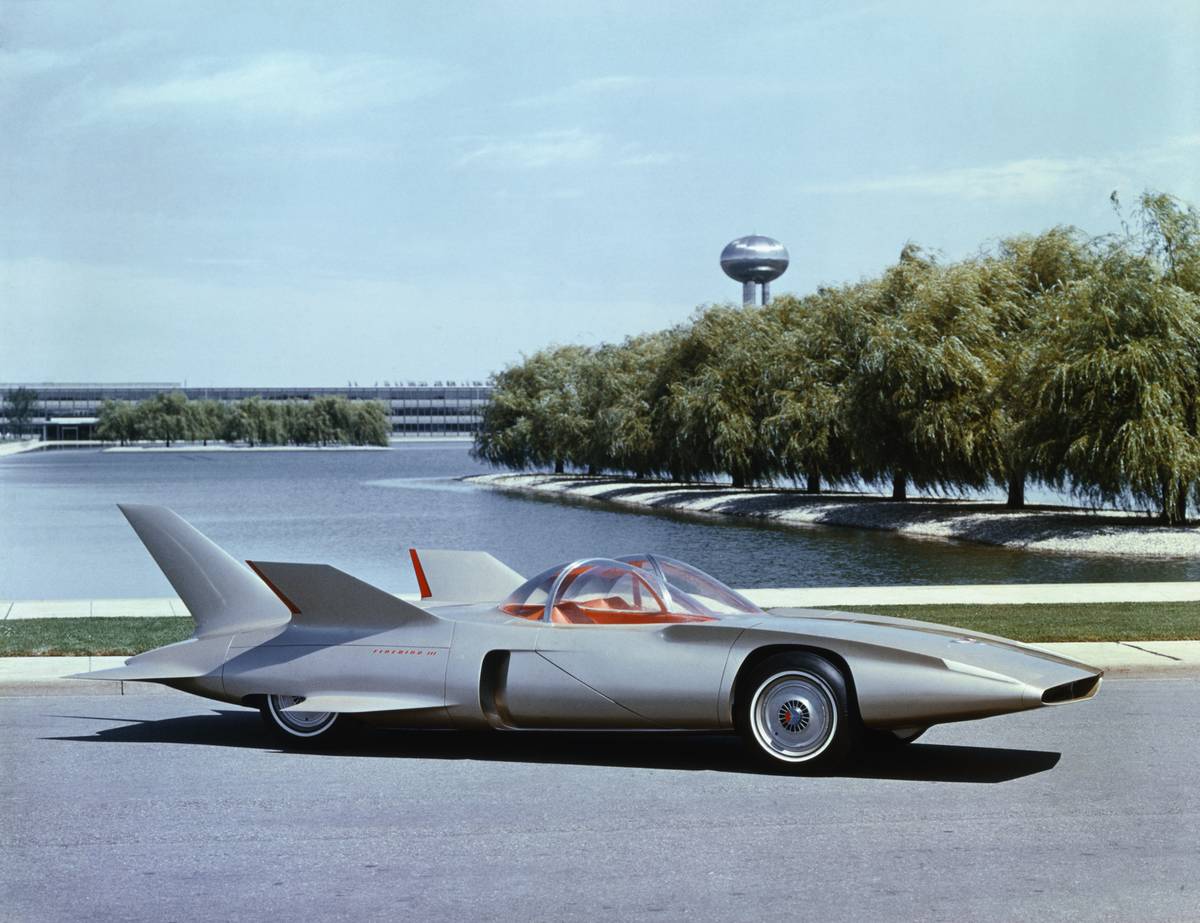
Debuting at the 1959 Motorama, the Firebird III had a fiberglass body, a double-bubble canopy, and multiple wings and tail fins. Beyond its striking exterior, it boasted a number of futuristic features, including cruise control and anti-lock brakes.
The Firebird III notably introduced innovative air drag brakes akin to those used in aircraft and an ‘ultra-sonic’ key to open the doors. The most unique thing, however, was that the steering was controlled by a joystick positioned between the two seats.
Chevrolet Astro III (1969)
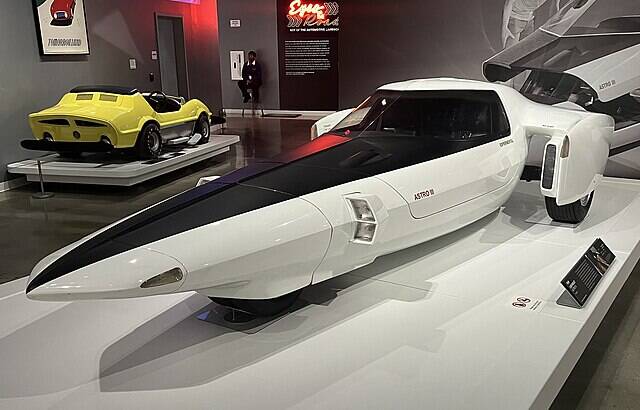
General Motors’ Chevrolet Astro III was inspired by the sleek design of jet aircraft. This futuristic concept car was intended to push the boundaries of automotive design. However, its front wheels were placed so close to each other that it resembled a three-wheeler and had limited stability.
While the Astro III featured a number innovative design elements, it failed to resonate with mainstream consumers accustomed to more traditional designs of the era… and could never become a success.
BMW Lovos (2009)
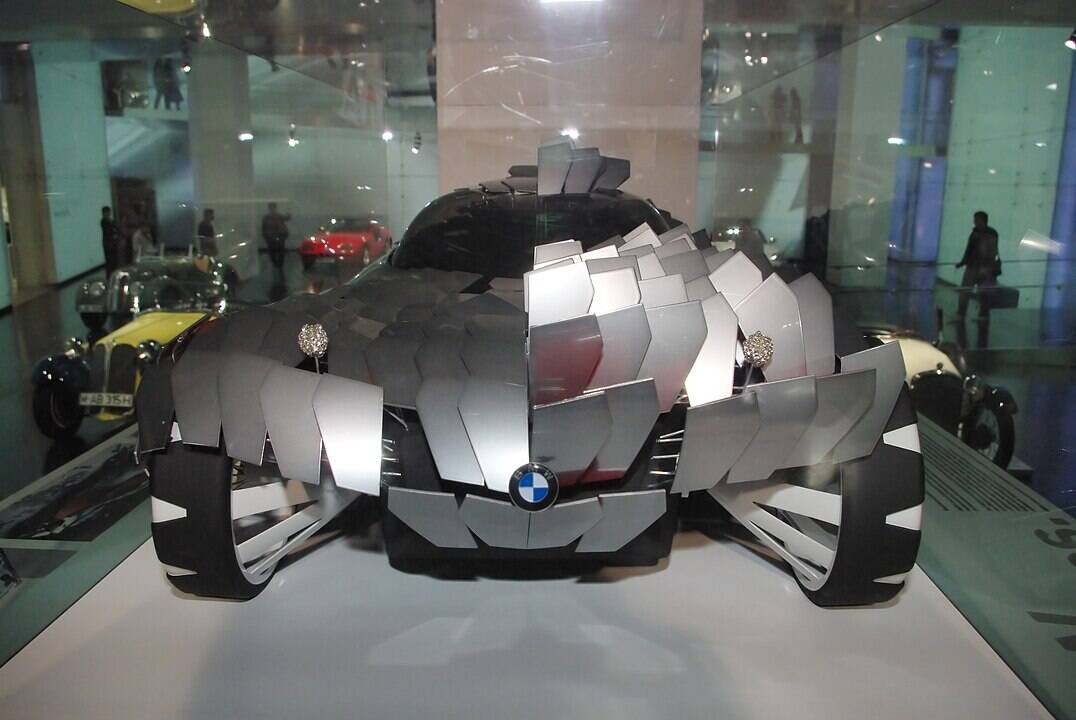
The most inexplicable design BMW ever came up with has to be Lovos. The car was made up of 260 identical and interchangeable moving parts that had the ability to open and close. These metallic scales would turn into air brakes when they opened.
In addition to that, the metallic scales also worked as solar panels that optimally captured the sunlight depending on the position of the sun. The Lovos was famously conceived by a 24-year-old design student at the University of Pforzheim in Germany.
Renault Racoon (1993)

The Renault Racoon was designed to tackle any kind of terrain and had aquatic capabilities as well. It featured a twin-turbocharged V6 engine paired with a six-speed manual transmission and all-wheel drive system to generate 262hp and 363 Nm of torque.
The Racoon boasted a number of innovative features that set it apart in both design and functionality. It used a canopy door, could be raised for additional ground clearance, featured computer control, and had cameras instead of rear-view mirrors.
Toyota FV2 (2014)

The Toyota FV2 was light years ahead of conventional cars when it debuted at the 2014 Geneva Motor Show. Instead of using traditional controls, the driver in the FV2 had to shift their body intuitively to move the vehicle forward, backward, left, or right.
Additionally, the FV2 could communicate with nearby vehicles and highway infrastructure to receive safety information in real-time. It had an augmented reality (AR) display on the windscreen… and the car’s body color and exterior display could be changed as per driver’s will.
Peugeot Hoggar (2004)
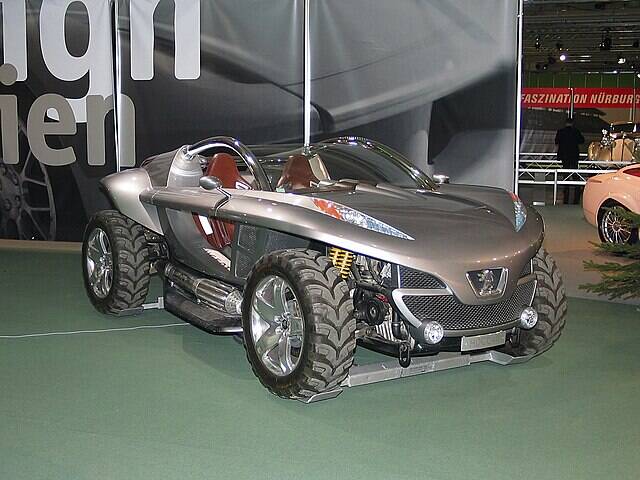
A roofless two-seater off-road vehicle, the Peugeot Hoggar puzzled many with an unconventional twin-engined setup. The car had a pair of 2.2-liter diesel engines, one for the front and one for the rear wheels.
The Hoggar offered impressive power, with the two engines combining to deliver 360 hp and up to 800 Nm of torque in a four-wheel drive configuration. However, it was way too unconventional (and even impractical) to progress beyond the concept stage.
BMW GINA (2008)
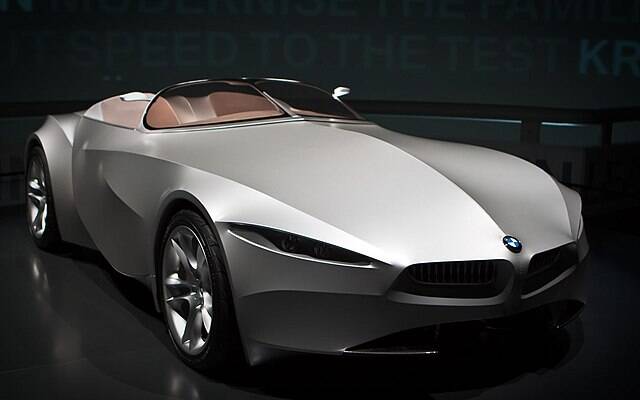
The GINA (Geometry and functions In ‘N’ Adaptions) Light Visionary Model was a revolutionary sports car concept from BMW. The car had a fabric-skinned body that could change shape based on external conditions and the driver’s preferences.
GINA only had four main panels: the bonnet, two side panels, and the trunk. Instead of traditional metal panels, its body was made of fabric stretched over a frame with movable parts, which allowed the car to adapt its shape dynamically.
Pininfarina Modulo (1970)

The Pininfarina Modulo concept car failed to captivate enthusiasts due to its impracticalities, that include closed wheels, a canopy design, and a bizarre shape that posed engineering challenges.
These complexities hindered its progression beyond the realm of concept… and like numerous other concept cars of its time, it could never transition to production. Nevertheless, from the 1970s to the present day, it still stands as a symbol of experimental automotive design, revered for its daring innovation and futuristic vision.
Toyota Pod (2001)

The Toyota Pod was designed to be a companion that could understand the feelings of the driver. The car used an advanced warning system that could detect the driver’s pulse and perspiration before interpreting it to find any irregularity in this biometric data.
It then responded by changing its lighting and wagging its ‘tail’ antenna to relax the driver. The name “pod” suggests a protective capsule, which symbolizes its role in enveloping and safeguarding family members.
Peugeot Proxima (1986)
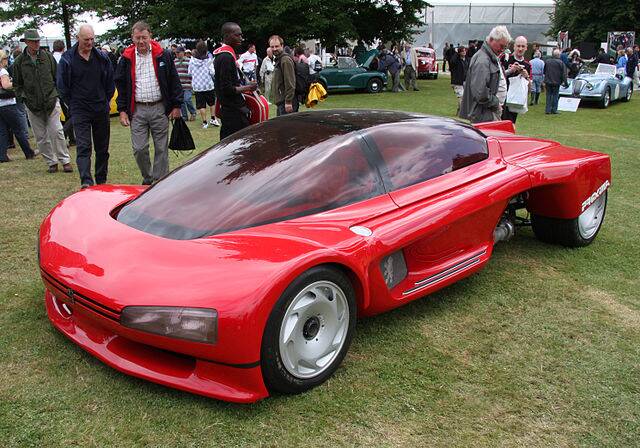
Drawing inspiration from science fiction and named after the closest star to our solar system (Proxima Centauri), the Proxima was unveiled by Peugeot at the 1986 Paris Motor Show. This high-performance vehicle featured a twin-turbocharged V6 engine packing a whopping 680 horses, enabling a top speed of 348 km/h (216 mph).
The Proxima was also equipped with traction control, with power being automatically sent to the front wheels when rear-wheel slippage occurs. Additionally, it had electronic controls to manage the gearbox and clutch for optimal handling.
Audi RSQ (2004)
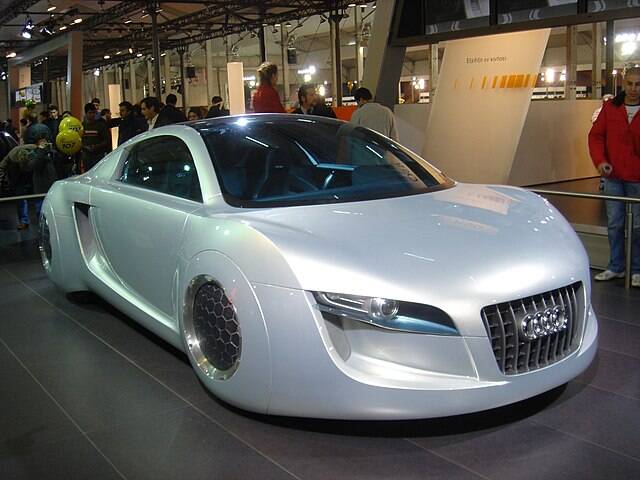
Gaining prominence from its appearance in Will Smith’s sci-fi film ‘I, Robot,’ the RSQ captured the audience with its futuristic features and design. Departing from traditional wheels, the RSQ rolled along on spheres and boasted butterfly doors.
This visionary sports coupe was intended to capture attention and flaunt Audi’s engineering prowess (which it did) rather than enter mass production, as its unrealistic features aligned more with science fiction than real-world feasibility.
Nissan Pivo (2005)
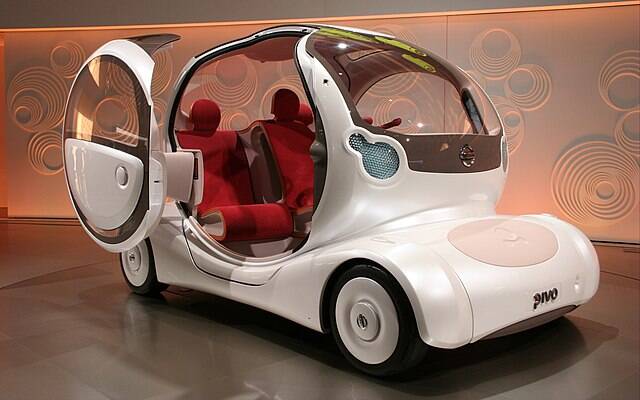
The Nissan Pivo is basically a 360-degree rotating three-seater cabin on four wheels that simplified parking and eliminated the need for reversing. The Pivo’s compact size, rotating cabin, and electric powertrain system made waves when it debuted at the 2005 Tokyo Motor Show.
The car also had Nissan’s Around View Monitor system with numerous advanced safety features including blind view monitoring. However, despite its futuristic design and tons of features, the Pivo remained a concept car.
Renault Zoom (1992)
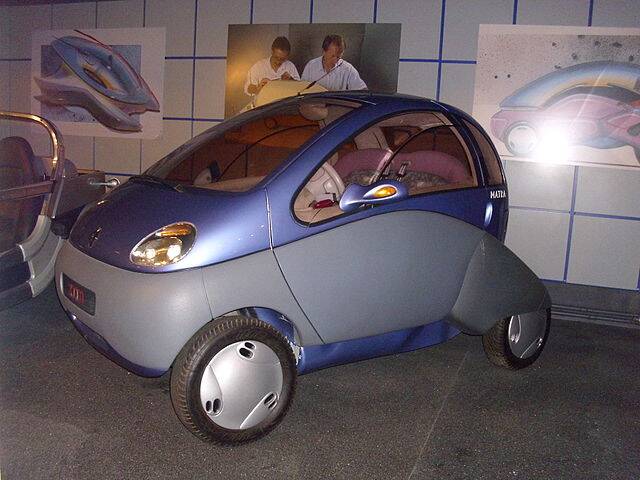
Developed through collaborative research between Renault and Matra into modern electric cars, the Zoom was introduced at the 1992 Paris Motor Show. This super-compact two-seater concept car measured 2,650 mm in length and 1,520 mm in width.
The Zoom is also perhaps the most technologically intricate small car ever produced, featuring a complex rear suspension system that allowed for variable wheelbase adjustments based on driving conditions. Despite its significant acclaim upon launch, the Zoom could never progress beyond its initial prototype stage.
Aston Martin Bulldog (1979)
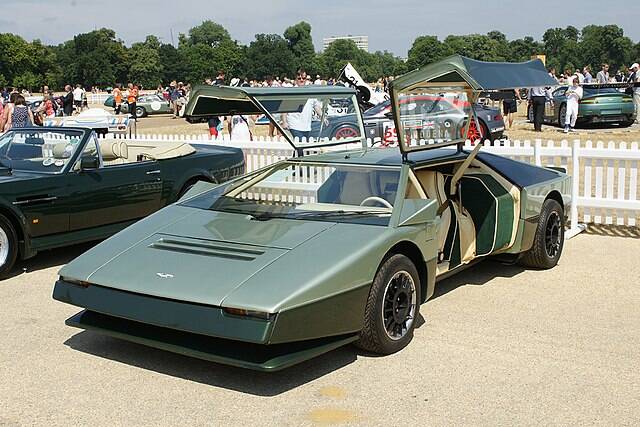
Designed in 1979 by William Towns, the Aston Martin Bulldog was a truly unique creation characterized by its wedge-shaped design and low-slung profile. It also incorporated the aerodynamic principles of its era, besides advanced tech demonstrating the brand’s engineering prowess.
The car was originally intended to have a limited production run of 25, but for various reasons, it did not proceed further than a prototype. Despite its singular existence, the Bulldog survives today and is currently undergoing a comprehensive restoration.
Demo Zero (1978)

A Japanese concept car unveiled by Dome at the 1978 Geneva Motor Show, the Zero made a bold statement with its sharp, angular rear side and distinctive pop-up headlights. Its aggressive design, even more so than the Lamborghini Countach, drew widespread attention upon its debut.
The Zero was originally intended for racing at Le Mans, but this ambition unfortunately never materialized… and it could never advance to production. It did, however, cement its status as an icon of late 1970s Japanese automotive design.
Bertone Carabo (1968)
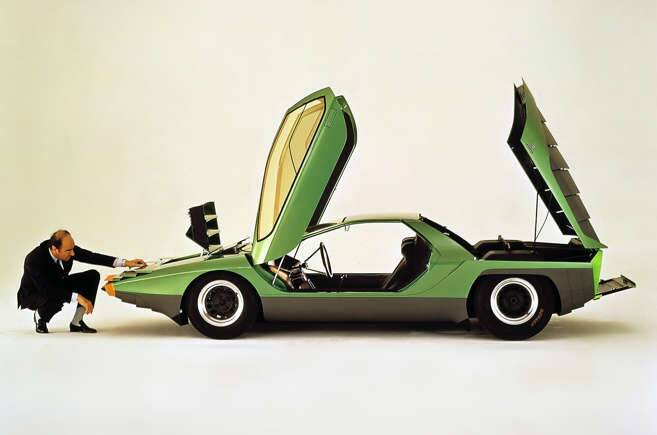
In 1968, Bertone unveiled one of its most captivating creations: the Carabo. This dreamy concept car captured the attention of car enthusiasts with its sleek and stylish aerodynamic body.
The Carabo boasted a unique aesthetic appeal with its colored glass accents and its butterfly doors that opened upwards. Built on the chassis of an Alfa Romeo 33 racer with a V8 in the middle, it also offered a lot of performance in addition to its striking appearance.
Peugeot Moovie (2005)
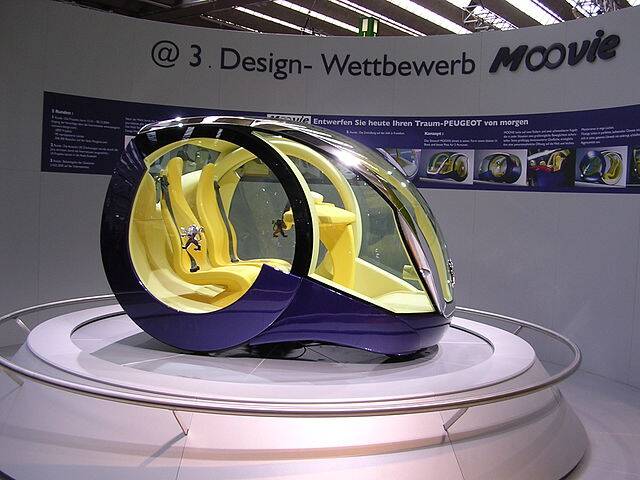
Designed by a 23-year-old Portuguese university student, the Peugeot Moovie was a compact 2-door, 2-seat city car known for its distinctive round shape and extensive glass enclosure.
Unlike other city cars, the Moovie’s interior was very spacious and open, and featured a bright yellow theme. The concept car was developed as an agile and eco-friendly vehicle for urban commute… but Peugeot couldn’t proceed with production and never disclosed the reason for doing so.
Venturi Astrolab (2006)

The Venturi Astrolab was a concept battery electric car, with 39 sq ft of high-efficiency solar cells integrated into its bodywork. The car featured a 16 kW electric motor and had a top speed of 74.5 mph.
Unveiled as a zero-emission vehicle, the Astrolab had a potential range of 11 miles using solar power alone, which could be extended to 62 miles with onboard batteries. To achieve energy efficiency, it featured an ultra-lightweight monocoque chassis made from carbon.



